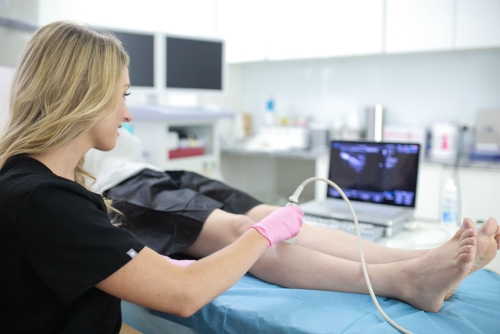This is one of the common questions asked by the patient who is going for the spider vein laser treatment: “Do spider veins come back after laser treatment?” This is also an important question, so you can invest your time and money in it. But in this article, you will be getting the right answer, so to know more about the same, continue reading this article.
What are spider veins?Telangiectasias, more commonly known as spider veins, are visible blood vessels just beneath your skin’s surface that have been bruised. They generally turn red, blue, or purple. They might occur in clusters and resemble a spider web or tree branch. Spider veins might appear anywhere; however, they most frequently spread on the legs and in facial areas. Spider veins are harmless in most cases. Their treatment is warranted only for cosmetic purposes. Treatment can often clear them. You may also want to make some lifestyle changes to help stop new ones from forming.
How long does it take for spider veins to disappear following laser treatment?Laser therapy is one of the most common non-invasive treatments used for spider veins, but it is not the most effective. Laser therapy directs light waves into the spider veins. Light energy slowly breaks down the walls of spider veins, therefore making sure that their eventual absorption by the body takes place. Laser therapy only works on very small and thin spider veins, and sometimes several sessions are required to realize visible results. The blood vessels lighten after the laser treatment for spider veins in six weeks.
What are the ways to prevent spider veins after laser treatment?Here are some of the ways to take care of the spider veins so that they do not come back.
ExerciseExercise regularly keeps your circulatory system active, which may help slow or strengthen the veins. Avoid running, jogging, and weightlifting, as they are strenuous exercises. You can take small walks several times a day to ensure better blood flow and avoid blood clots.
Compression stockingsYou can wear compression stockings for 1–2 weeks to aid in better blood circulation and reduce swelling. Gradient-compression stockings can also be worn.
Avoid heatHot water is a vein-enlarging factor, so you should avoid hot baths, hot tubs, and saunas. You also need to take lukewarm water for bathing and avoid applying hot compresses to the area being treated. The sun, as previously stated, can cause dark spots and burning; hence, you should not expose your legs to the sun for the period advised by your doctor.
Maintain a healthy weight.Being overweight can lead to spider veins.
Avoid standing or sitting for too long.If possible, elevate the legs above heart level.
Avoid anti-inflammatoriesTaking anti-inflammatories, such as aspirin or ibuprofen, will act against the success of the treatment and cause more bleeding.
Eat foods rich in vitamin B.Vitamin B will also act to maintain strong veins and prevent new spider veins from arising. These foods are rich in vitamin B: beef, liver, peanuts, and sunflower seeds. Try to maintain a healthy diet and avoid high heels or tight clothing.
In ConclusionNow that you are clear about how you can prevent spider veins, it is necessary that you follow all the steps so that you can stop them from reappearing after the treatment. If you are still confused about “What Doctor Treats Varicose Veins,” then it will be good to research it perfectly to know more about them. Following this, book your appointment because, most often, spider veins are cosmetic in nature, and patients seek therapy for this reason. Leg pain and discomfort are common symptoms associated with varicose veins. Therefore, people seek treatment for varicose veins to alleviate symptoms or for cosmetic purposes.












